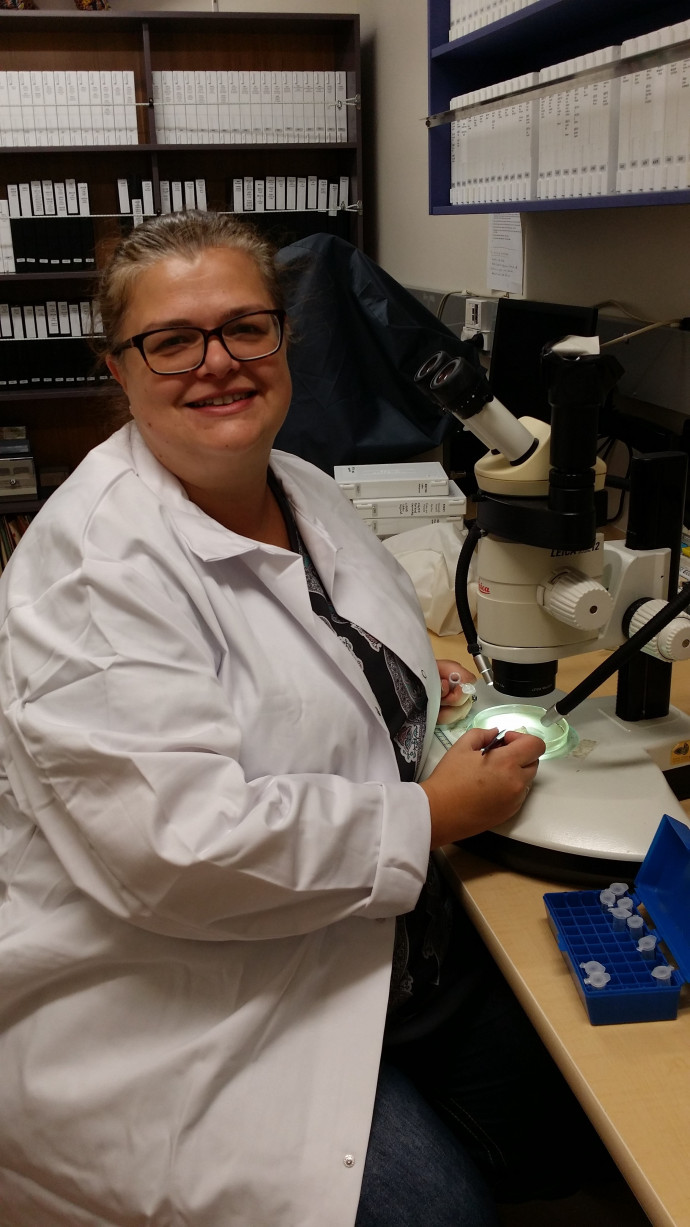Hornby High School – Helen Boothby

2017 | Unlocking New Zealand’s ancient environment
School: Hornby High School
Host: Landcare Research, Lincoln
Region: Christhurch
Hornby High School’s vision is to be a centre of creative excellence. In undertaking this wonderful programme managed by The Royal Society Te Apārangi, Helen Boothby will be creating leadership opportunities, professional development knowledge and programmes that will further engage students taking science. Helen will return with many new ways to help our students, the science department, and the school, to grow around our strategic goals of providing future focussed learning and encouraging inspirational risk taking leadership.
Helen has been involved with science education for 18 years. She started her teaching career working in environmental education in the United Kingdom, then progressed into secondary school science teaching. Since moving to New Zealand in 2007, she has taught at primarily low decile schools in Christchurch. Helen has a passion for working with young people, introducing them to the amazing natural world around them, and instilling in them a sense of stewardship for their environment.
Helen has been hosted by Landcare Research in Lincoln where she was supervised by Dr Jamie Wood, a paleoecologist in the Long-Term Ecology Lab. She has participated in a wide range of projects, all of which has helped her understand about how researching into our ecological past can have significant importance for our future. These included ancient DNA extraction and amplification, identification of sediment from prehistoric kākāpō nesting sites, charcoal sampling from wetland cores, and pollen analysis. She also spent time in different departments, including insect biocontrol, plant systematics, and molecular ecology, which has allowed a wider understanding of the roles that Landcare Research perform.
A particular highlight for Helen was being able to work on her own project, analysing sediment that had been removed from a cave site in central Otago. Carbon dating indicated that the material collected was almost 9,000 years old. Feathers, coprolites, egg shell, bone fragments, and insect remains show that the cave was probably a nesting site for ancient kākāpō, and was also visited by other birds such as kākāriki and moa. Helen has collected and identified seeds that were present in the sediment, the remains of the birds’ meals. These seeds show what the vegetation was like in Otago at the start of the Holocene epoch: predominantly woody, with plenty of herbaceous plants, and very little grasses. This is in stark contrast to today’s dry, grassy environment, showing that the habitat has undergone major changes in the last few thousand years. Helen also managed to extract some flea specimens which may be an important find as potentially the oldest ectoparasites of a terrestrial New Zealand bird. She took it upon herself to make contacts with prominent entomologists around the world, and collaborated with a researcher in Canada in order to formally identify the specimens.
By being a participant teacher on the Science Teaching Leadership Programme, Helen has gained insight into how scientists cooperate with each other, and how they communicate with the wider community. She has a better understanding of the intricacies of the nature of research and is looking forward to forging more connections between researchers and Hornby High School. She would like to thank the Royal Society Te Apārangi, MBIE, and Landcare Research for this amazing opportunity.
